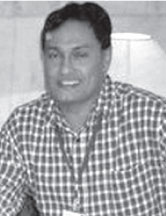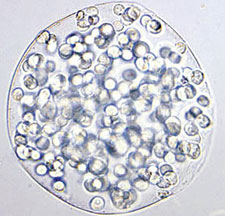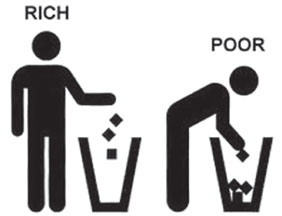|

Sri Lanka’s first medical museum
By Nilma DOLE
Research in Sri Lanka is underestimated and not clearly understood by
society. Little do we know that medical breakthroughs are possible after
extensive research and development which is imperative to save lives.
Today, Sri Lanka is an example to other countries in the area of medical
research in health innovations and technologies applied to the health
sector.
 |
|
Research at MRI |
This is reflected in the successful medical goals achieved in Sri
Lanka which has made a tremendous impact to make the country’s health
sector the best.
With this in mind, Sri Lanka’s Medical Research Institute (MRI) has
become the focal point in bringing the best of bio-medical and applied
health research to the standard it is today.
The MRI conducts extensive research in various fields ranging from
virology to immunology.
The MRI as the national laboratory provides the hospitals with
diagnostic laboratory tests for Japanese encephalitis, measles, rubella
and influenza and also functions as a regional reference laboratory for
poliomyelitis.
It is important to understand how a little research goes a long way
in combatting even the deadly dengue which is spread by mosquito
vectors.
In such a realm of expertise and professionalism, the MRI will
elevate medical research to the next level with the opening of Sri
Lanka’s first medical museum.
“The De Soysa Bacteriological Institute building will be revamped as
Sri Lanka’s first medical museum,” said director of the Medical Research
Institute, Dr. Anil Samaranayake.
He said this would make Sri Lanka an example for other nations in
developing the health infrastructure and policies taking medical
research to a more dynamic platform.
The director was speaking at the Medical Research Institute’s 111th
anniversary celebrations held recently.
The Medical Research Institute has garnered many Presidential awards
for its innovative research projects.
“We would need at least Rs 200 million to make this dream a reality
but I’m hopeful that if we dream it, we can do it,” said the director.
He said that he hopes that the Museum, when completed will be a centre
of learning excellence.
”It will be centre of life sciences in its widest sense which would
be on par with international standards,” he said.
The Museum will pave the way for a new generation of worthy
professionals who will contribute to the country in terms of highly
developed research. Dr. Samaranayake said: “I want to ensure that we
don’t repeat the same mistakes as our predecessors but seek new and
comprehensive solutions to present issues by the inspiring a younger
generation who aim at the best professionalism.”
Indeed, the MRI has overcome all obstacles to ensure that timely and
accurate reporting of information is done dispensing the best medical
research documentations.
“We aim at improving the health of Sri Lankans through world-class
medical research to achieve the national health goals set by the
Ministry of Health,” said Dr. Samaranayake. Supporting research from
clinical trials where major diseases are quickly understood with a
simple test and how to prevent it has become the mainstay of medical
research technology.
“However, medical research needs funding and this has always been an
issue from the time of its inception and we hope that we could solve
this problem because research on the best medicines could save lives and
save millions,” the doctor said.
|
History of the MRI
The MRI was built by J.W.C.
de Soysa, in commemoration of Queen Victoria’s Diamond
Jubilee. The ceremonial opening was by the then Governor of
Ceylon, Sir Joseph West Ridgeway, on January, 31 1900 and
initially named The Soysa Bacteriological Institute. Sir
Marcus Fernando, a consultant physician of the General
Hospital, Colombo was appointed in an acting capacity as the
first head of the institute. Later, Dr. Joseph Silva and Dr.
S.C.Paul too acted as the director of the institute for a
short period.
 |
|
Dr. Anil
Samaranayake |
In 1903, Dr. Aldo
Castellani, Professor of Pathology was appointed the first
Director of the MRI. Dr. Castellani had a global reputation
as the discoverer of the etiology of Sleeping Sickness in
1902 in Sub- Saharan Africa.
In Sri Lanka, he conducted a
large number of pioneer research studies in the fields of
microbiology and parasitology. As the Director of the MRI he
introduced various laboratory tests for the diagnosis of
bacterial, fungal and parasitic infestations for the first
time in Sri Lanka. Dr. Castellani also introduced
vaccination for typhoid infections. In 1909 a vaccine unit
to produce small pox and anti-typhoid vaccines was set up.
This erudite scholar had to
leave the colony, Ceylon, prematurely, in 1915, as he
refused to change his Italian nationality during the
political fiasco created by World War I. Dr. Lucas A.
Nicholls, a lecturer in Bacteriology at the Ceylon Medical
College was then appointed as the Director of the MRI. Under
his tenure, a Pasteur Institute was commissioned in 1918.
Legend has it that the well-known philanthropist Soysa was
bitten by a rabid dog and consequently he died at a
relatively young age.
Thereafter, his family
donated a large sum of money to set up the institute. In
1936, the Pasteur institute and the Vaccination
Establishment were amalgamated with the De Soysa
Bacteriological Institute.
In 1938, the Department of
Nutrition was set up at the De Soyza Bacteriological
Institute (Now MRI) to research the prevailing the major
nutritional problems at the time of Director Dr. Lucian A.
Nicholas who lectured in Bacteriology and Tropical Medicine
but had a wide range of interests including Nutrition.
Dr. Nimalasuriya headed the
Department of Nutrition since then and he became the first
Sri Lankan Director of the Institute from August 1945 and
changed the name of the Institute as Medical Research
Institute in 1946. |
Mother’s blood test reveals baby’s sex
by Frederik Joelving
NEW YORK (Reuters Health) - Blood drawn from expectant mothers could
offer parents an earlier sneak peek at their baby’s sex than methods
currently used in the U.S., researchers said Tuesday.
The test may be particularly valuable for families that harbour
sex-linked genetic disorders like hemophilia, they add.
Because such disorders only strike boys, knowing that the baby is a
girl could spare the mother diagnostic procedures, such as
amniocentesis, that carry a small risk of miscarriage.
“It could reduce the number of invasive procedures that are being
performed for specific genetic conditions,” said Dr. Diana Bianchi of
Tufts University School of Medicine, who worked on the new study.
But other researchers voiced concerns, saying it could be misused to
terminate a pregnancy if the baby isn’t of the desired sex.
“What you have to consider is the ethics of this,” said Dr. Mary
Rosser, an obstetrician and gynaecologist at the Montefiore Medical
Center in New York.
Gender
“If parents are using it to determine gender and then terminate the
pregnancy based on that, that could be a problem,” she told Reuters
Health. “Remember, gender is not a disease.”
The test looks for small pieces of the male sex chromosome in the
mother’s blood, which would mean she is carrying a baby boy.
Some European hospitals already rely on the method, called cell-free
fetal DNA, although it’s not available from doctors in the U.S.
“What they are finding in England is that many women are not going on
to have the invasive tests,” Bianchi told Reuters Health.
In those procedures, doctors either extract a small amount of the
fluid that surrounds the fetus (amniocentesis) or they take a sample of
the placenta (chorionic villus sampling). Between one in 100 and one in
600 mothers miscarry as a result, according to Bianchi. In a fresh look
at the medical evidence for the blood test, she and her colleagues
analysed 57 earlier studies that included more than 6,500 pregnancies.
They found parents could trust the test 98.8 percent of the time when
it said they’d have a boy, and 94.8 percent of the time when it
indicated a girl.
That leaves some room for error, which could be important if parents
are making medical decisions based on the results — such as whether or
not to get an invasive procedure to look for genetic disorders.
Ultrasound
However, the current non-invasive alternative an ultrasound done at
the end of the first trimester isn’t always good at spotting a baby’s
sex, Bianchi’s team reported in the Journal of the American Medical
Association.
And the blood test is reliable as early as seven weeks into the
pregnancy, whereas ultrasound is not. Bianchi said one study had
estimated the blood test costs about 255 pounds in the UK (about $413),
all included.
While it’s available over the Internet, she said her team had only
looked at hospital-based test performance.
“I don’t know why it is not being incorporated in the US,” she said.
Rosser, however, chalked that up to the ethical issues it raises.
“It is a great test that can be part of our armamentarium of
noninvasive testing that we use,” she said. “But it should only be used
by families that are at risk for sex-linked diseases.”
Bianchi said she owns stock in Verinata Health, a company that is
developing cell-free fetal DNA tests for Down syndrome, although that
company had no role in the new study.
Source: Journal of the American Medical Association.
How tumour cells are fed
Researchers have gained a new understanding of the way in which
growing tumours are fed and how this growth can be slowed via
angiogenesis inhibitors that eliminate the blood supply to tumors.
This represents a step forward towards developing new anti-cancer
drug therapies.
 The
results of this study have been published in the September issue of The
American Journal of Pathology. The
results of this study have been published in the September issue of The
American Journal of Pathology.
“The central role of capillary sprouting in tumor vascularization
makes it an attractive target for anticancer therapy.
“Our observations suggest, however, that targeting just this mode of
blood vessel formation may not be sufficient to result in a significant
antitumor effect,” commented investigators.
Investigators from the Semmelweis University, the National Institute
of Oncology, and the National Koranyi Institute of Pulmonology,
Budapest, Hungary, and the Medical University of Vienna, Vienna,
Austria, used electron and confocal microscopy to examine tumor tissue
in mice in which malignant tumor cells had been introduced.
They proposed a novel mechanism for the development of tissue pillars
(the most characteristic feature of intussusceptive angiogenesis, in
which a vessel folds into itself to form two vessels).
Moreover, they demonstrated a significant increase in pillar
formation after treatment with the angiogenesis inhibitor vatalanib.
Their observations support the notion that inhibition of just a single
tumor vascularization mechanism can trigger alternative ones.
Prior to this study, the mechanism of pillar formation had not been
fully understood.
Investigation revealed a progression of events that generates a
connection between the processes of endothelial bridging and
intussusceptive angiogenesis resulting in rapid pillar formation from
pre-existing building blocks.
To describe this mechanism of pillar formation the group coined the
term “inverse sprouting.”
“It is well established now that tumors can obtain sufficient blood
supply from alternative vascularization mechanisms (such as
intussusceptive angiogenesis) to grow without capillary sprouting (known
as the key mode of new vessel formation in cancer).
Therefore, antiangiogenic therapies should be tailored depending on
the angiogenic phenotype in each single tumor, and the targeting of
non-sprouting angiogenic mechanisms in cancer seems to be a rational
strategy.
Our study provides new understanding of cancer-induced
intussusceptive angiogenesis and may serve as a basis for the
development of novel drugs targeting this type of blood vessel
formation.”
Courtesy: Elsevier Health Sciences
Psychological Science:
Social class as culture
Social class is more than just how much money you have. It’s also the
clothes you wear, the music you like, the school you go to - and has a
strong influence on how you interact with others, according to the
authors of a new article in Current Directions in Psychological Science,
a journal of the Association for Psychological Science.
 People
from lower classes have fundamentally different ways of thinking about
the world than people in upper classes - a fact that should figure into
debates on public policy, according to the authors. People
from lower classes have fundamentally different ways of thinking about
the world than people in upper classes - a fact that should figure into
debates on public policy, according to the authors.
People who come from a lower-class background have to depend more on
other people. “If you don’t have resources and education, you really
adapt to the environment, which is more threatening, by turning to other
people,” Keltner says. “People who grow up in lower-class
neighbourhoods, as I did, will say,’ There’s always someone there who
will take you somewhere, or watch your kid. You’ve just got to lean on
people.’” Wealthier people don’t have to rely on each other as much.
This causes differences that show up in psychological studies. People
from lower-class backgrounds are better at reading other people’s
emotions.
They’re more likely to act altruistically. “They give more and help
more. If someone’s in need, they’ll respond,” Keltner says. When poor
people see someone else suffering, they have a physiological response
that is missing in people with more resources. “What I think is really
interesting about that is, it kind of shows there’s all this strength to
the lower class identity: greater empathy, more altruism, and finer
attunement to other people,” he says. Of course, there are also costs to
being lower-class. Health studies have found that lower-class people
have more anxiety and depression and are less physically healthy.
Upper-class people are different, Keltner says. “What wealth and
education and prestige and a higher station in life gives you is the
freedom to focus on the self.”
In psychology experiments, wealthier people don’t read other people’s
emotions as well. They hoard resources and are less generous than they
could be.
One implication of this, is that’s unreasonable to structure a
society on the hope that rich people will help those less fortunate.
“One clear policy implication is, the idea of nobless oblige or
trickle-down economics, certain versions of it, is bull,” Keltner says.
“Our data say you cannot rely on the wealthy to give back.
The ‘thousand points of light’ - this rise of compassion in the
wealthy to fix all the problems of society - is improbable,
psychologically.”
The ability to rise in class is the great promise of the American
Dream. But studies have found that, as people rise in the classes, they
become less empathetic. Studies have also found that as people rise in
wealth, they become happier - but not as much as you’d expect.
“I think one of the reasons why is the human psyche stops feeling the
need to connect and be closer to others, and we know that’s one of the
greatest sources of happiness science can study,” Keltner says.
- Association for Psychological Science
|

